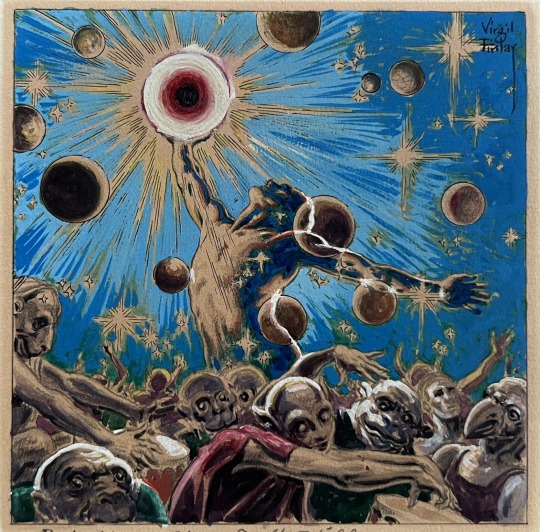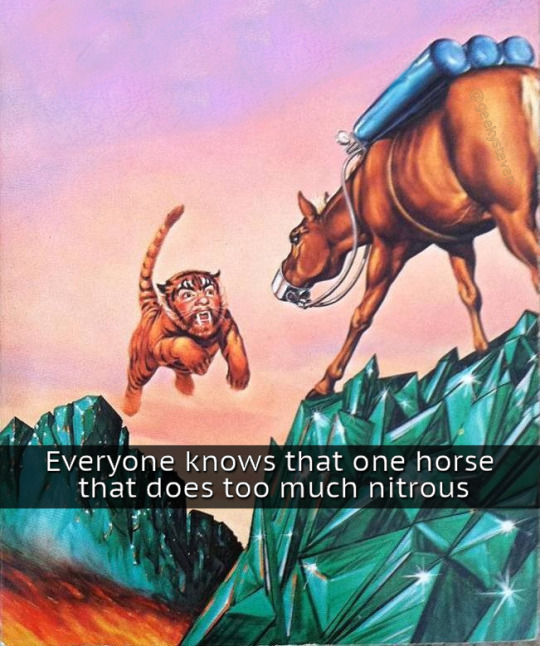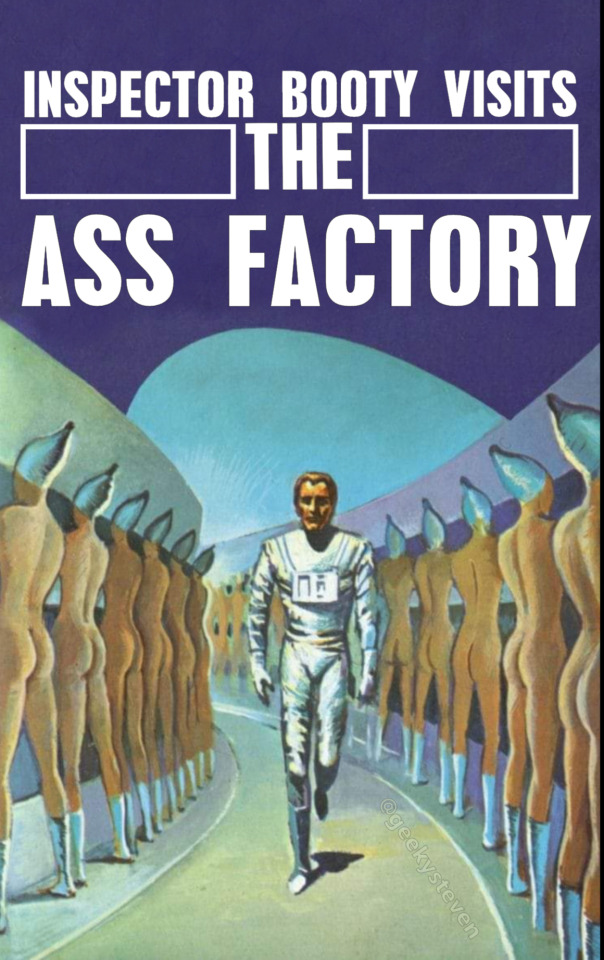#Cordwainer Smith
Explore tagged Tumblr posts
Text

A book you very likely don’t have on your shelf #615
Cover by Ron Bradford -- 1963
#1963#1960s#1960's#cordwainer smith#cover art#book cover#paperback#vintage paperback#science fiction#scifi#sci fi#sci-fi#ephemera
21 notes
·
View notes
Text
wrote about the japanese reception to cordwainer smith and how he may have pioneered a lot of anime tropes like catgirls and is the reason evangelion has the term, human instrumentality project.
17 notes
·
View notes
Text

The October 1962 issue of Galaxy Science Fiction. Cordwainer Smith's novelette The Ballad of Lost C'Mell was the cover story. Artwork by Virgil Finlay.
7 notes
·
View notes
Text

ATOMSK by Carmichael Smith [aka Paul Linebarger; aka Cordwainer Smith] (New York: Newell, Sloan, Pearce,1949)
Drawing on Paul Linebarger's own expertise in the field of psychological warfare, the book is a study of the personality of a U.S. operative (Major Michael Dugan) who has little in common with James Bond except his extreme resourcefulness under cover and in danger.
It is considered b some to be the first Cold War secret agent novel.
#book blog#books#books books books#book cover#pulp art#espionage#cold war#secret agent#paul linebarger#cordwainer smith#carmichael smith#book design#suspense
5 notes
·
View notes
Text

Virgil Finlay, illustration for Cordwainer Smith’s story Under Old Earth, Galaxy Magazine (Feb. 1966)
Source
13 notes
·
View notes
Text
On the history of catgirls, in meme format:
Broke: talking about Masamune Shirow's Puma sisters
Woke: talking about Osamu Tezuka's Bagi
Bespoke: talking about Cordwainer Smith's C'mell
#catgirl#masamune shirow#domionion#tank police#osamu tezuka#bagi the monster of mighty nature#anime#manga#science fiction#cordwainer smith#instrumentality of mankind#of course the actual originals are in h.g. wells#the island of dr moreau
5 notes
·
View notes
Text

Because I’m not already doing enough (sarcasm anyone?), I’m also making sandals for my sister.
1 note
·
View note
Text
youtube
This week we learn about the insane lengths Helge Meyer went to help starving kids in the Yugoslav Wars and the CIA/ Chinese Nationalist Party ties of acclaimed Sci-Fi writer Cordwainer Smith. A listener email explains why King Tut was particularly stiff when mummified.
#podcast#500 open tabs#Helge Meyer#Yugoslav Wars#CIA#Chinese Nationalist Party#Yugoslavia#Cordwainer Smith#sci fi#author#king tut#kaveh taherian#hannah hillam#audio only#science fiction#history#signal boost#nebula#nebula tv#bosnia#balkins#post apocalyptic santa claus#lego#armor plated camaro#ghost camaro#god's rambo#biggest balls in the balkins#no i will not stop adding tags#steve swanson#forest of incandescent bliss
1 note
·
View note
Text
Le dijo que cuando las gentes viajaban entre los astros, los sentimientos antiguos que llevaban en el interior despertaban, y el abismo de sus mentes era más espantoso que los más negros abismos del espacio. El espacio no cometía crímenes. Sólo mataba. La naturaleza podía transmitir la muerte, pero sólo el hombre podía contagiar el crimen de un mundo a otro.
Piensa azul, cuenta dos. Cordwainer Smith
1 note
·
View note
Text
and then of course there's the stories where cats are vital crew members to help deal with things like Space Dragons

such as in the SF classic, "The Game of Rat and Dragon," by Cordwainer Smith (Galaxy Science Fiction, October 1955):
https://www.gutenberg.org/files/29614/29614-h/29614-h.htm

Cats are the new bosses.
76K notes
·
View notes
Text
[Free eBook] The Best of Cordwainer Smith by Cordwainer Smith [Vintage Classic Science Fiction]
The Best of Cordwainer Smith by the late Cordwainer Smith, the sfnal writing pseudonym of scholar Paul Linebarger, edited by J. J. Pierce, is a collection of vintage science fiction stories, free for a limited time courtesy of publisher Phoenix Pick Press.
This is their featured Free Ebook of the Month offer for March and was originally published in 1975 by Ballantine Books as part of their Ballantine's Classic Library of Science Fiction line. A bonus freebie from February is also still offered, the fantasy Earth Magic by Alexei & Cory Panshin, as well as a tie-in discount to another Smith novel.
The collection contains a selection of Smith's short stories and novelettes from the 1950s and 1960s in his Instrumentality of Mankind future setting where humanity has colonized a number of other planets, plus two essays by editor Pierce about the author and the Instrumentality universe. Several stories have been much-translated, and one of the novelettes was nominated for the Retro Hugo Award which recognizes early sfnal work from before the awards' creation.
Offered DRM-free worldwide through the month of March and probably until April 3rd (the offer usually rotates on the first Tuesday of each month), available directly from the publisher.
Free for a limited time through March directly @ the publisher's special promo page (DRM-free ePub & Mobi bundle available worldwide in return for your valid email address; follow the instructions on the page to reset the suggested cart price to $0.00 during checkout)
There's also a discounted tie-in offer for $2.99 of a reprint of Cordwainer Smith's 1975 novel Norstrilia, a dystopian planetary adventure in the Instrumentality of Mankind universe, originally published by Ballantine Books (now a Penguin Random House imprint). This has previously been offered free and also in a number of other tie-in sales, so you might already have a copy.
Description Cordwainer Smith was one of the original visionaries to think of humanity in terms of thousands of years in the future, spread out across the universe. This brilliant collection, often cited as the first of its kind, explores fundamental questions about ourselves and our treatment of the universe (and other beings) around us and ultimately what it means to be human.
In “Scanners Live in Vain” we meet Martel, a human altered to be part machine—a scanner—to be able withstand the trauma space travel has on the body. Despite the stigma placed on him and his kind, he is able to regrasp his humanity to save another.
In “The Dead Lady of Clown Town” we get to know the underpeople—animals genetically altered to exist in human form, to better serve their human owners—and meet D’Joan, a dog-woman who will make readers question who is more human: the animals who simply want to be recognized as having the same right to life, or the people who created them to be inferior.
In “The Ballad of Lost C’mell” the notion of love being the most important equalizer there is—as first raised in “The Dead Lady of Clown Town”—is put into action when an underperson, C’mell, falls in love with Lord Jestocost. Who is to say her love for him is not as valid as any true-born human? She might be of cat descent, but she is all woman!
And in “A Planet Named Shayol” it is an underperson of bull descent, and beings so mutilated and deformed from their original human condition to be now considered demons of a hellish land, who retain and display the most humanity when Mankind commits the most inhumane action of all.
#free ebook#cordwainer smith#instrumentality of mankind#j. j. pierce#science fiction#short stories#golden age science fiction#drm free
0 notes
Text

Oops, I Just Bought a Planet: Norstrilia by Cordwainer Smith
Alan Brown Wed Jun 8, 2022 11:00am
In this bi-weekly series reviewing classic science fiction and fantasy books, Alan Brown looks at the front lines and frontiers of the field; books about soldiers and spacers, scientists and engineers, explorers and adventurers. Stories full of what Shakespeare used to refer to as “alarums and excursions”: battles, chases, clashes, and the stuff of excitement.
One of the lesser-known gems of the science fiction world in the mid-20th century is the work of author Cordwainer Smith. He brought an international flavor to a science fiction field that, for all its creativity, was deeply rooted in the culture and conventions of the United States. His stories of the Instrumentality of Mankind were intriguing, giving the reader science fiction tales with the storytelling conventions of fantasy and legend. And in the centerpiece of this future history, the novel Norstrilia, he brought young and naïve Rod McBan to the mysterious and dangerous planet called Earth.
As I recollect, the copy of Norstrilia I used for this review is the copy I bought about a year after graduating from college, and according to the title page is the third Del Rey edition, printed in 1978. That date would put my purchase in the Alaskan town of Sitka, a tiny seacoast community accessible only by air or water. There was only one bookstore in the tiny town, right across the main street from the Russian Orthodox church with its onion-dome spires. Fortunately for me, the store had a good selection of paperback science fiction that turned over regularly.
The work of Cordwainer Smith was not new to me when I found Norstrilia, as I had read some of his work in my dad’s Galaxy magazines during my youth. I had always found his stories intriguing, if a bit strange compared to the more straightforward adventures I was used to reading in Analog.
About the Author
Paul Myron Anthony Linebarger (1913-1966), who wrote science fiction under the name Cordwainer Smith, was an author and scholar who wrote influential works on psychological warfare and on East Asian politics. He was born in Wisconsin, and lived during his youth in the United States, Europe, Japan, and China, reportedly attending more than thirty schools. He spoke multiple languages, and attained a PhD at age 23. He began writing science fiction in college in the late 1920s, although his stories didn’t start appearing in the leading magazines until the late 1940s.
Commissioned as a lieutenant during WWII, Linebarger served in Army Intelligence in China and India, rising to the rank of major. He remained in the reserves, eventually attaining the rank of colonel. He was recalled to aid the British in a Malaysian guerrilla conflict, and recalled again during the Korean War. He was a professor at Johns Hopkins University, but is also reported to have been a behind-the-scenes advisor to the CIA and the US government.
Most of Linebarger’s science fiction work was set in a unique and evocative future history, the Instrumentality of Mankind. By using unusual terms and names without much explanation, he created the impression this universe was much larger than what appeared within the pages of the stories (I will have to dip into Linebarger’s other stories to find out what Mother Hinton’s Littul Kittons are, for example). This was a society that was anything but a utopia: so advanced that much of its science was akin to magic, with a hereditary ruling class, a brutal police state to enforce their will, space pilots called “scanners” whose brains were damaged by their work, and animals called the “underpeople” raised to human intelligence and near-human appearance, but treated as slaves. One of the programs of the Instrumentality was the Rediscovery of Man, which was intended to strengthen humanity and reduce stagnation by reintroducing disease and unrest to society. The human economy was dominated by stroon, a drug which extended life, and was only available from giant diseased sheep grown on the planet Norstrilia.
Linebarger’s body of science fiction work was not large, as he lived a busy life and died at the relatively young age of fifty-three. He wrote only a handful of novels, Norstrilia being the most widely known, and about three dozen short stories.
You can find some of Smith’s work on Project Gutenberg, including “The Game of Rat and Dragon,” one of his better-known stories, and some of his non-fictional works, including the seminal book Psychological Warfare.
Cordwainer Smith is not to be confused with Cordwainer Bird, a pseudonym sometimes used by science fiction author Harlan Ellison (the fact that a cordwainer is a kind of cobbler, and birds do not need shoes, amused Ellison). The use of this pseudonym was then made even more confusing when author Philip José Farmer began using the name for a fictional character in some of his own works.
The Lonely Protagonist
Rod McBan is a lonely protagonist, pulled out of his own world and culture with little to no notice, and thrust into a world he only dimly understands. And while reading Norstrilia, I realized that, while he is a lonely character, he is far from alone in the field of science fiction. The genre is full of characters who are orphaned, exiled, or just plain don’t fit in. When you consider that Linebarger spent his youth in many countries and dozens of schools, it is not surprising that he could skillfully depict someone who feels apart from his surroundings.
The frequency of lonely heroes in science fiction might be due to the prevalence of the familiar story structure known as the Hero’s Journey, which has appeared in literature throughout human history. One of the characteristics many mythical adventures share is the removal of the protagonist from the world they grew up in or are comfortable with. Looking through the books I have reviewed over the years for this column, I found that about a third of them feature a character that might fit the description of a lonely protagonist. Of course, being lonely does not mean that the characters are alone, as they encounter mentors, antagonists, guides, and love interests in the course of their journeys.
I’ve also noticed that many of the readers of science fiction share characteristics of loneliness with the fictional protagonists they follow. This type of character might be so popular because it speaks to the readers in a way they understand. Being a science fiction fan, especially when I was young, could be a lonely existence. For my own part, growing up in the 1950s through the 1970s, there were very few people I knew (other than my father and brothers) who were as enthusiastic about science fiction as I was. My intimate knowledge of Marvel comics, for example, was not something I mentioned to girls I wanted to date. In those days, choosing to be a science fiction fan was to choose something hard to share with others. And I’ve seen signs of this loneliness when I’ve met other fans.
That aspect of being a science fiction fan seems to be eroding in recent decades, as science fiction and comic book stories have come to dominate the entertainment business. You don’t have to wait to attend a science fiction club meeting or convention to find someone to discuss your favorite passions with—one of the positive aspects of social media is that it can bring together groups of people who enjoy the same things. I sometimes wonder if these changes in society might eventually have an impact on the literature of science fiction, and we might see fewer stories of isolated heroes and more stories about groups working in collaboration. Only time will tell…
Norstrilia
The book opens more like a fairy tale than a novel. While the story is science fiction, the form and narrative owe more to fantasy than the straightforward style of science fiction. Norstrilia begins by telling us, rather than showing us, what the story is about. This allows the author to introduce us to a great deal of backstory all at once, but because little of this information is explained, the reader is tossed into the literary equivalent of deep water, and must quickly learn to swim in this dense and sometimes inscrutable narrative.
We meet young Rod McBan, 151st of his name, who is on the cusp of inheriting the family ranch, the ominously named Station of Doom, where giant sickly sheep produce the precious drug called stroon. His inheritance is far from certain, however. Rod, unlike other Norstrilians, cannot spiek or hier telepathically (not reliably, anyhow). When he does hier, he can listen in to many people’s minds over wide distances. And when he spieks, he transmits powerful emotions, again over wide distances. In attempts to correct these deficiencies, he has had his childhood restarted a number of times, living those years over and over. Now, he must face what is called the Garden of Death, a trial that determines whether Norstrilians will be executed by drugs that kill them with happiness, or allowed to go on with their lives. His only friends are an old battle computer, hidden on the farm, which has educated him over the years, and his cousin Lavinia, one of the few people who is comfortable speaking to him with her voice in the old manner.
Rod’s trial board consists of three people, two local, and one surprisingly the Lord Redlady, a Commissioner of the Instrumentality. Redlady convinces the board that Rod’s different abilities are not a liability, but rather a gift. And he is allowed to live.
Rod’s survival angers an old childhood adversary, who is now a government official with the title of Onseck, a corruption of the ancient term Honorary Secretary. The Onseck has placed blocks on Rod’s inheritance of the Station of Doom. Rod visits his computer, which suggests that, working together, they could corner the market on stroon, making Rod richer and giving him more power over his destiny. They succeed beyond their wildest dreams, and after a long trading session, Rod finds himself not only the richest man in civilization, but also owner of the planet Earth.
Being incredibly rich turns out to bring problems of its own. The Onseck attempts to murder Rod with a genetically engineered bird, and there are rumors of kidnapping plots. The Lord Redlady appears to help, and convinces Rod to go to Earth. But to slip Rod past those who wish to harm him, they must ship him as cargo. So, in a sequence replete with body horror, an intelligent ape in Redlady’s service amputates Rod’s head, freeze-dries the rest of his body, and packs him up in a small box. When Rod is reconstructed, to protect him, he is molded into the form of an underperson descended from a cat, and married to the famously lovely courtesan, C’Mell. This reconstruction leads to additional dangers, as Rod retains a sense of privilege that could get him killed for violating the rigid laws that apply to underpeople. A servant from his ranch, Elanor, accompanies Rod to Earth, and agrees to have her body reformed into an image of his, throwing off the efforts of those seeking him. Lord Redlady, while he does everything in his power to ensure all Rod’s wishes for his trip to Earth are granted, also has his own agenda, as do the underpeople, whose leader, the mysterious E’telekeli, meets with Rod and gives him aid.
I won’t continue the recap further, as I don’t want to reveal spoilers (although I will say that Elanor finds she prefers life as a young man who resembles the richest man on Earth to being a female servant on Norstrilia…). Rod’s journey through the culture of Earth is absolutely fascinating, with many interesting asides. This culture is by no means a utopia, and is even ugly and cruel. But despite its dark and whimsical aspects, it also feels very real and plausible. Without being heavy-handed, the book deals with issues of free will, duty, diversity, racism, slavery, and the very nature of what makes a person. The journey tends to wander, but always in directions I found fascinating. And in the end, when Rod returns to Norstrilia, we are given a heartwarming ending that, in only a couple of lines, also becomes absolutely heartbreaking.
Final Thoughts
Cordwainer Smith is a writer who should not be forgotten. His work was rich and fascinating, and unlike the output of many other writers of his era, his tales have aged like a good whiskey. Norstrilia is available in a number of formats, and a few years ago, the NESFA Press put out The Rediscovery of Man, a collection of his short works.
And now, I look forward to hearing your thoughts on Smith’s work and his legacy. Are you as captivated by the Instrumentality of Man as I am?
1 note
·
View note
Text
proposition: it would be extremely funny to do an Instrumentality of Mankind/Doctor Who universe merge because then Gallifrey would be covered in giant sheep
hey, nobody can prove the Timeless Child isn't from Norstrilia
0 notes
Note
Do you know anything about Arthur C Clarke's reception in Japan and in Japanese pop culture? I just finished reading Childhood's End because I've seen it referenced in Xenogears, Gurren Lagann and Planet With, which isn't objectively a lot but more than the zero times I've seen it in American pop Scifi. Makes me curious how big he was over there.
Oh yeah, he was quite big in Japan! Essentially "all" the classic Sci Fi was, and Clarke was one of the biggest. Childhood's End specifically was one of Yukio Mishima's favourite books, for example. All of his works were pretty widely translated soon after release (Childhood's End was definitely available in Japan in the 1960's, that I know), and were very popular with both the SF crowd and the literary scene. In general, he was the right blend of "hard" sci fi with fantastical/spiritual elements that was very much in vogue at the time. And in the early history of Japan's animage community, those were all mushed together as one scene, only moving to more separate tracks in the 1980's. I remember in one of the essays I translated over the years, literary critic Nozomi Omori (in 1997) makes one of those "classic works like" comments and Clarke/Childhood's End is his go-to to illustrate the point. I think you can argue it is in the top 5 most famous works in this era.
A bunch of the specific references you are seeing are the unique lineage of some ~80's anime works like Space Runaway Ideon: Be Invoked. Yoshiyuki Tomino (gundam creator), who directed the film, was a big Clarke fan, 2001 most specifically I think, and the film has several direct nods to him. There are other works that draw from this well, Ideon is just the biggest, and the one that was the most direct inspiration for Evangelion as Anno was a big fan. From there you can see the references go out - Gurran Laagan is a Gainax work, Planet With's creator Satoshi Mizukami was a huge Gainax fan (particularly FLCL, shout out!), etc - as you get later the references become second-order like that, less people reading the classics but the ideas are in the water. Though I don't want to overstate that direct link - Xenogears lead creator Tetsuya Takahashi is just a direct fan of Clarke as well, and explicitly pulled from such works for the project (you can see a bunch in works by Square in the 90's)
Though a personal note, you will if you google around find people saying Evangelion was "referencing" Childhood's End with Instrumentality? Best I know that isn't true, instrumentality itself as a word is a nod to Instrumentality of Mankind by Cordwainer Smith, and Anno is on record saying it is a shallow reference, he just thought the word sounded cool. Anno was not a classic SF fan, he is one of those "second order" guys where he is picking up the stuff movies like Ideon are putting out, but isn't interested in their classic origins.
72 notes
·
View notes

